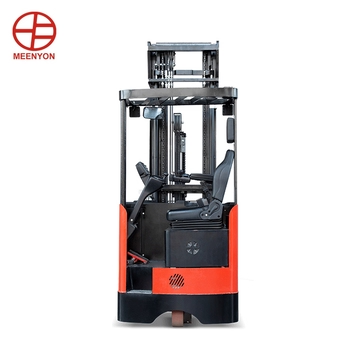Electric forklift batteries play a crucial role in powering these essential machines that are used in warehouses, distribution centers, and other industrial settings. Understanding the lifespan of electric forklift batteries and the associated replacement costs is key to maximizing the efficiency and effectiveness of your operations.
Factors Affecting Lifespan
The lifespan of an electric forklift battery can vary depending on several factors. One of the primary determinants of battery lifespan is the number of charge cycles it goes through. A charge cycle refers to the process of fully charging and discharging the battery. Over time, the number of charge cycles a battery can undergo before its performance begins to decline will diminish. Typically, electric forklift batteries are designed to last between 1,500 and 2,000 charge cycles, which equates to approximately 5 years of use under normal operating conditions.
Other Factors Impacting Lifespan
However, other factors can also impact the lifespan of electric forklift batteries. These include the temperature at which the battery is operated, the frequency of deep discharges, and the maintenance practices employed. Extreme temperatures, frequent deep discharges, and lack of proper maintenance can all contribute to a shorter battery lifespan.
Replacement Costs
When it comes time to replace an electric forklift battery, the costs can vary significantly depending on the size and type of battery needed. On average, the cost of a new electric forklift battery can range from $3,000 to $6,000 or more. Lithium-ion batteries, which are becoming increasingly popular due to their longer lifespan and faster charging times, tend to be more expensive than traditional lead-acid batteries.
Total Replacement Costs Considerations
In addition to the upfront cost of purchasing a new electric forklift battery, there are other factors to consider when calculating the total replacement costs. These include the cost of installation, any necessary modifications to the forklift to accommodate the new battery, and ongoing maintenance costs.
Best Practices for Battery Maintenance
To help minimize replacement costs and extend the lifespan of your electric forklift batteries, there are several best practices that you can implement. These include:
Implementing a regular battery maintenance schedule, which includes tasks such as cleaning battery terminals, checking water levels (for lead-acid batteries), and monitoring for signs of corrosion or damage.
Avoiding deep discharges whenever possible, as these can accelerate battery wear and reduce lifespan.
Storing batteries in a cool, dry place when not in use to help preserve their performance.
Investing in a battery management system (BMS) to monitor and optimize battery performance, charge levels, and more.
Conclusion
By understanding the lifespan of electric forklift batteries and the associated replacement costs, you can make informed decisions about how to best maintain and manage your battery fleet. With proper care and maintenance, you can help ensure that your electric forklift batteries provide reliable power for years to come, ultimately maximizing the efficiency and effectiveness of your operations.